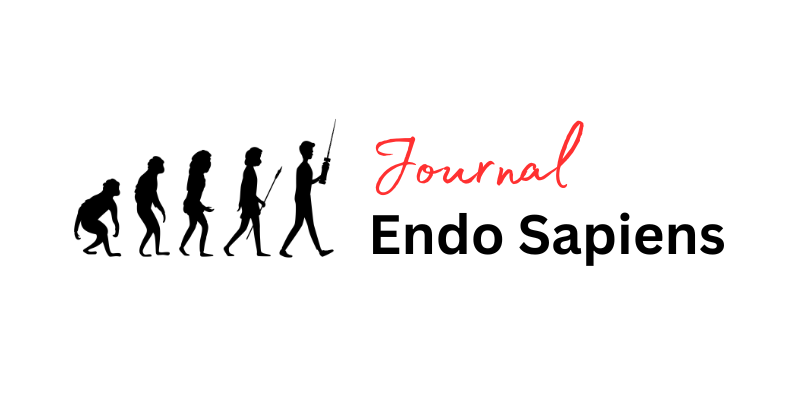
case report
Biological and procedural factors affecting the outcome of apical microsurgery. A case report
Domenico Ricucci, MD, DDS 1
Ya-Hsin Yu, DDS, MS, DMD 2
Samuel Kratchman, DMD 2
Irina Milovidova, DDS 1
Isabela N. Rôças, DDS, MSc, PhD 3
José F. Siqueira Jr, DDS, MSc, PhD 3
https://doi.org/10.71347/dhf874kg1
1 Private practice, Cetraro, Italy.
2 Department of Endodontics, University of Pennsylvania, Philadelphia, PA, USA
3 Postgraduate Program in Dentistry, Grande Rio University (UNIGRANRIO), Rio de Janeiro, RJ, Brazil
Corresponding author:
Dr. Domenico Ricucci, Piazza Calvario, 7, Cetraro (CS) 87022, Italy.
E-mail address: dricucci@libero.it
Key words: postsurgical apical periodontitis; calcium silicate materials; root-end resection; root canal infection; bacterial biofilm
Acknowledgements: The authors deny any conflicts of interest
Abstract
Background: The success rate of contemporary apical surgery is high after the introduction of magnification, ultrasonics, and bioceramic materials. Persistent apical periodontitis following surgical treatment is usually related to the failure in eliminating or at least sealing residual bacteria occurring in the root canal system.
Case Description: This article reports on a clinical case of postsurgical apical periodontitis associated with a mandibular molar exhibiting failing root-end filling with a bioceramic (calcium silicate-based) material. The tooth had been subjected to retreatment and later to apical surgery because of persistent apical periodontitis. After a period in that the lesions had apparently healed based on radiographs, the appearance of a sinus tract and the observation of recurrence of the apical periodontitis lesions on both roots as shown by CBCT led to indication for a new surgery. Surgery revealed a fracture in the mesial root. The tooth was extracted and the distal root with the associated apical periodontitis lesion was processed for histobacteriological analysis of the possible etiology of postsurgical disease. A residual bacterial infection, favoured by substandard technical surgical issues, was the most likely cause of the periapical inflammation. It was also apparent that root end filling was not placed along the long axis of canal to depth of at least 3mm, and the bioceramic material used as root-end filling allowed bacteria to leak across and grow on it forming biofilm structures.
Conclusion: The observation of bacteria leaking through the bioceramic material used as root-end filling questions the reported antimicrobial properties of bioceramic materials.
Introduction
The success rate of apical surgery is relatively high, especially after the introduction of magnification, ultrasonics for root-end resection and preparation, and bioceramic (also referred to as hydraulic, calcium silicate-based, or MTA-based) root-end filling materials (Rubinstein & Kim 2002, Setzer et al. 2010, Tsesis et al. 2013, von Arx et al. 2019).
Antunes HS, Gominho LF, Andrade-Junior CV et al. (2016) Sealing ability of two root-end filling materials in a bacterial nutrient leakage model. International Endodontic Journal 49, 960-5.
Camilleri J, Atmeh A, Li X, Meschi N (2022) Present status and future directions: Hydraulic materials for endodontic use. International Endodontic Journal 55 Suppl 3, 710-77.
Camilleri J, Montesin FE, Brady K, Sweeney R, Curtis RV, Ford TR (2005) The constitution of mineral trioxide aggregate. Dental Materials 21, 297-303.
Carr GB (1997) Ultrasonic root end preparation. Dental Clinics of North America 41, 541-54.
Chong BS, Owadally ID, Pitt Ford TR, Wilson RF (1994) Antibacterial activity of potential retrograde root filling materials. Endodontics and Dental Traumatology 10, 66-70.
Economides N, Pantelidou O, Kokkas A, Tziafas D (2003) Short-term periradicular tissue response to mineral trioxide aggregate (MTA) as root-end filling material. International Endodontic Journal 36, 44-8.
Farrugia C, Baca P, Camilleri J, Arias Moliz MT (2017) Antimicrobial activity of ProRoot MTA in contact with blood. Sci Rep 7, 41359.
Friedman S (2008) Expected outcomes in the prevention and treatment of apical periodontitis. In D Ørstavik, T Pitt Ford eds. Essential endodontology; pp. 408-69. Oxford, UK: Blackwell Munksgaard Ltd.
Gutmann ME, Harrison JW (1991) Surgical endodontics Cambridge, MA: Blackwell.
Hsu YY, Kim S (1997) The resected root surface. The issue of canal isthmuses. Dental Clinics of North America 41, 529-40.
Kim S, Kratchman S (2006) Modern endodontic surgery concepts and practice: a review. Journal of Endodontics 32, 601-23.
Kohli MR, Berenji H, Setzer FC, Lee SM, Karabucak B (2018) Outcome of Endodontic Surgery: A Meta-analysis of the Literature-Part 3: Comparison of Endodontic Microsurgical Techniques with 2 Different Root-end Filling Materials. Journal of Endodontics 44, 923-31.
Koutroulis A, Valen H, Orstavik D, Kapralos V, Camilleri J, Sunde PT (2023) Antibacterial Activity of Root Repair Cements in Contact with Dentin-An Ex Vivo Study. J Funct Biomater 14.
Lovato KF, Sedgley CM (2011) Antibacterial activity of endosequence root repair material and proroot MTA against clinical isolates of Enterococcus faecalis. Journal of Endodontics 37, 1542-6.
Prati C, Gandolfi MG (2015) Calcium silicate bioactive cements: Biological perspectives and clinical applications. Dental Materials 31, 351-70.
Primus CM, Tay FR, Niu LN (2019) Bioactive tri/dicalcium silicate cements for treatment of pulpal and periapical tissues. Acta Biomater 96, 35-54.
Ricucci D, Grande NM, Plotino G, Tay FR (2020) Histologic Response of Human Pulp and Periapical Tissues to Tricalcium Silicate-based Materials: A Series of Successfully Treated Cases. Journal of Endodontics 46, 307-17.
Ricucci D, Siqueira JF, Jr. (2008) Anatomic and microbiologic challenges to achieving success with endodontic treatment: a case report. Journal of Endodontics 34, 1249-54.
Rubinstein RA, Kim S (2002) Long-term follow-up of cases considered healed one year after apical microsurgery. Journal of Endodontics 28, 378-83.
Setzer FC, Shah SB, Kohli MR, Karabucak B, Kim S (2010) Outcome of endodontic surgery: a meta-analysis of the literature-part 1: comparison of traditional root-end surgery and endodontic microsurgery. Journal of Endodontics 36, 1757-65.
Siqueira JF, Jr, Lopes HP (1999) Mechanisms of antimicrobial activity of calcium hydroxide: a critical review. International Endodontic Journal 32, 361-9.
Siqueira JF, Jr, Rôças IN (2022) Treatment of endodontic infections, 2nd edn. London: Quintessence Publishing.
Tawil PZ, Trope M, Curran AE et al. (2009) Periapical microsurgery: an in vivo evaluation of endodontic root-end filling materials. Journal of Endodontics 35, 357-62.
Taylor RD (1966) Modification of the Brown and Brenn Gram stain for the differential staining of gram-positive and gram-negative bacteria in tissue sections. American Journal of Clinical Pathology 46, 472-6.
Torabinejad M, Corr R, Handysides R, Shabahang S (2009) Outcomes of nonsurgical retreatment and endodontic surgery: a systematic review. Journal of Endodontics 35, 930-7.
Torabinejad M, Parirokh M, Dummer PMH (2018) Mineral trioxide aggregate and other bioactive endodontic cements: an updated overview - part II: other clinical applications and complications. International Endodontic Journal 51, 284-317.
Tsesis I, Rosen E, Taschieri S, Telishevsky Strauss Y, Ceresoli V, Del Fabbro M (2013) Outcomes of surgical endodontic treatment performed by a modern technique: an updated meta-analysis of the literature. Journal of Endodontics 39, 332-9.
von Arx T (2005) Frequency and type of canal isthmuses in first molars detected by endoscopic inspection during periradicular surgery. International Endodontic Journal 38, 160-8.
von Arx T, Jensen SS, Janner SFM, Hanni S, Bornstein MM (2019) A 10-year Follow-up Study of 119 Teeth Treated with Apical Surgery and Root-end Filling with Mineral Trioxide Aggregate. Journal of Endodontics 45, 394-401.
Walivaara DA, Abrahamsson P, Isaksson S, Salata LA, Sennerby L, Dahlin C (2012) Periapical tissue response after use of intermediate restorative material, gutta-percha, reinforced zinc oxide cement, and mineral trioxide aggregate as retrograde root-end filling materials: a histologic study in dogs. Journal of Oral and Maxillofacial Surgery 70, 2041-7.
Weller RN, Niemczyk SP, Kim S (1995) Incidence and position of the canal isthmus. Part 1. Mesiobuccal root of the maxillary first molar. Journal of Endodontics 21, 380-3.
